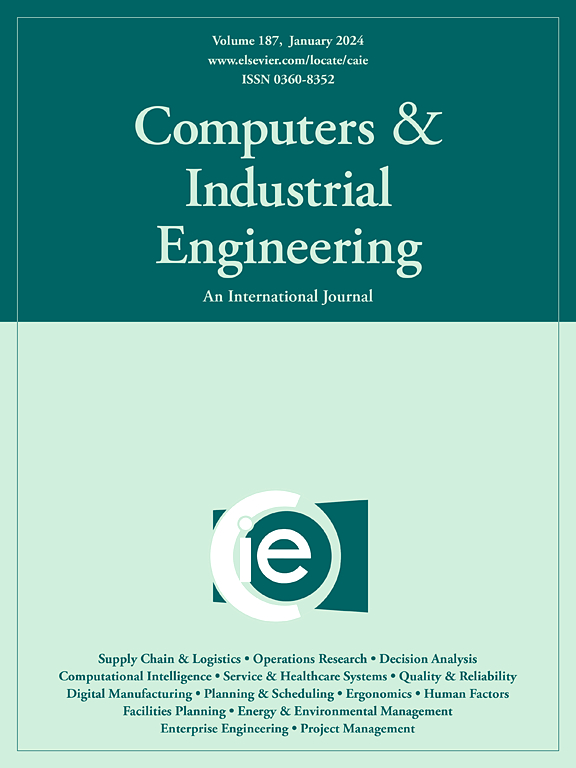双重放缓冲深度强化学习优化网约车系统匹配半径
IF 6.5
1区 工程技术
Q1 COMPUTER SCIENCE, INTERDISCIPLINARY APPLICATIONS
引用次数: 0
摘要
匹配半径是网约车系统中的一个关键变量,它被定义为等待乘客和空闲司机可以匹配的最大接送距离。优化匹配半径可以显著提高系统性能,但由于网约车环境的动态性,确定其最优值具有挑战性。匹配半径应适应时空变化以及供需的实时波动。为了解决这一挑战,本文提出了一种双回复缓冲区深度强化学习方法,用于动态匹配半径优化。该方法通过将匹配半径优化问题建模为马尔可夫决策过程,训练策略网络根据网约车系统中不断变化的条件自适应调整匹配半径,从而提高效率和服务质量。我们使用来自德克萨斯州奥斯汀的真实乘车数据验证了我们的方法。实验结果表明,该方法优于基线方法,在不同场景下实现了更高的匹配率、更短的平均接送距离和更好的驾驶员利用率。本文章由计算机程序翻译,如有差异,请以英文原文为准。
Optimizing matching radius for ride-hailing systems with dual-replay-buffer deep reinforcement learning
The matching radius, defined as the maximum pick-up distance within which waiting riders and idle drivers can be matched, is a critical variable in ride-hailing systems. Optimizing the matching radius can significantly enhance system performance, but determining its optimal value is challenging due to the dynamic nature of ride-hailing environments. The matching radius should adapt to spatial and temporal variations, as well as to real-time fluctuations in supply and demand. To address this challenge, this paper proposes a dual-reply-buffer deep reinforcement learning method for dynamic matching radius optimization. By modeling the matching radius optimization problem as a Markov decision process, the method trains a policy network to adaptively adjust the matching radius in response to changing conditions in the ride-hailing system, thereby improving efficiency and service quality. We validate our method using real-world ride-hailing data from Austin, Texas. Experimental results show that the proposed method outperforms baseline approaches, achieving higher matching rates, shorter average pick-up distances, and better driver utilization across different scenarios.
求助全文
通过发布文献求助,成功后即可免费获取论文全文。
去求助
来源期刊

Computers & Industrial Engineering
工程技术-工程:工业
CiteScore
12.70
自引率
12.70%
发文量
794
审稿时长
10.6 months
期刊介绍:
Computers & Industrial Engineering (CAIE) is dedicated to researchers, educators, and practitioners in industrial engineering and related fields. Pioneering the integration of computers in research, education, and practice, industrial engineering has evolved to make computers and electronic communication integral to its domain. CAIE publishes original contributions focusing on the development of novel computerized methodologies to address industrial engineering problems. It also highlights the applications of these methodologies to issues within the broader industrial engineering and associated communities. The journal actively encourages submissions that push the boundaries of fundamental theories and concepts in industrial engineering techniques.
 求助内容:
求助内容: 应助结果提醒方式:
应助结果提醒方式:


